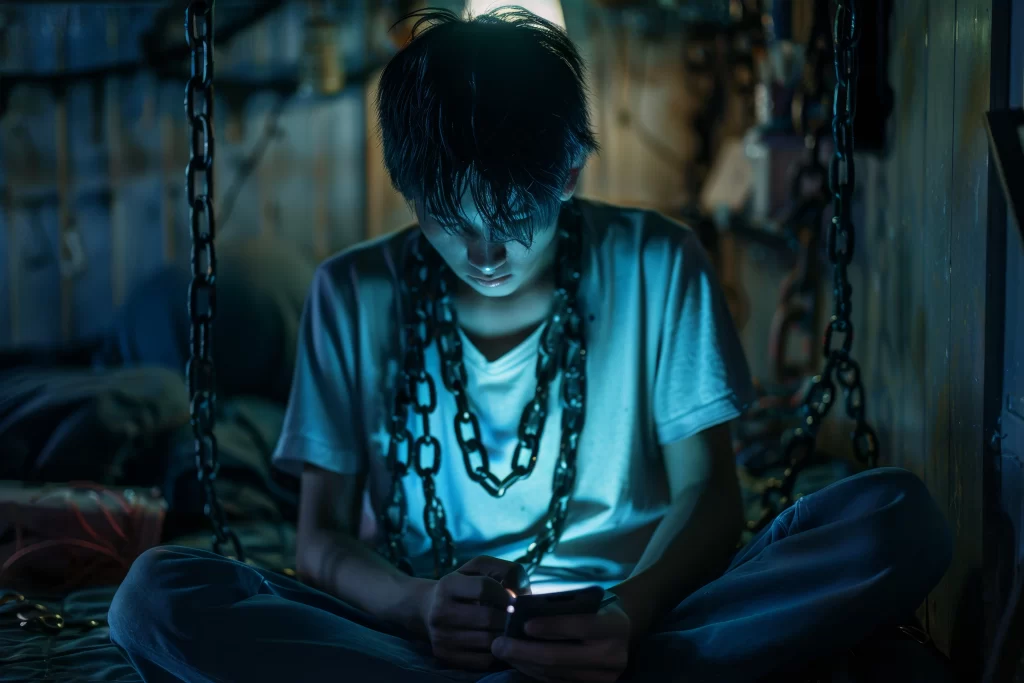Understanding Porn Addiction
Porn addiction is a form of behavioral addiction where an individual becomes compulsively dependent on consuming pornographic content. Similar to other types of addiction, it can interfere with daily life, relationships, and mental well-being. Recognizing the signs of porn addiction is the first step toward recovery and regaining control over one’s life.
Signs of Porn Addiction
Identifying whether you or someone you know has a pornography addiction is crucial for seeking appropriate help. Some common signs include:
- Inability to Control Consumption: Watching pornography despite repeated attempts to stop or reduce consumption.
- Preoccupation with Pornography: Thinking about pornography frequently, even when not watching it.
- Escalation: Seeking more extreme or prolonged content to achieve the same level of satisfaction.
- Neglecting Responsibilities: Ignoring work, studies, or personal obligations due to excessive pornography use.
- Relationship Problems: Experiencing difficulties in romantic or social relationships due to porn consumption.
- Secrecy and Shame: Hiding pornography use from friends, family, or partners and feeling guilt or shame after watching.
- Withdrawal Symptoms: Feeling restless, anxious, or irritable when unable to watch pornography.
- Desensitization to Real-Life Intimacy: Struggling to maintain arousal or interest in real-life sexual relationships.
- Financial or Legal Issues: Spending excessive money on adult content or engaging in risky online behaviors.
Effects of Porn Addiction
Pornography addiction can have significant negative impacts on an individual’s physical, mental, and social health. These include:
Mental and Emotional Effects
- Increased anxiety, depression, and low self-esteem.
- Feelings of loneliness and isolation due to social withdrawal.
- Reduced ability to experience pleasure in real-life interactions.
- Increased stress and guilt associated with compulsive use.
Physical Effects
- Sleep disturbances caused by late-night binge-watching.
- Decreased motivation for physical activities and self-care.
- Possible sexual dysfunction, such as erectile dysfunction (ED).
Social and Relationship Consequences
- Decreased interest in forming or maintaining real-life relationships.
- Unrealistic expectations about sex and intimacy.
- Trust issues with partners due to secretive behavior.
- Loss of productivity and focus in work or academic settings.
How to Overcome Porn Addiction
Breaking free from pornography addiction requires effort, commitment, and a structured approach. Here are some key steps toward recovery:
1. Acknowledge the Problem
The first step to recovery is recognizing and admitting that there is a problem. Accepting that pornography consumption has become an addiction is essential for seeking help and making changes.
2. Identify Triggers and Avoid Them
Understanding what triggers the urge to watch pornography—whether it’s stress, boredom, loneliness, or other emotions—can help in developing strategies to avoid or cope with these triggers.
3. Set Clear Goals
Establishing a timeline and setting realistic goals for reducing or eliminating pornography use can be effective. Small, gradual changes can lead to long-term success.
4. Seek Professional Help
Consulting a therapist or counselor specializing in behavioral addiction can provide valuable support and guidance. Cognitive-behavioral therapy (CBT) is a widely used approach that helps individuals change their thought patterns and behaviors.
5. Join Support Groups
Engaging in support groups such as Sex Addicts Anonymous (SAA) or online communities can provide a sense of accountability and encouragement from others facing similar challenges.
6. Replace Pornography with Healthy Activities
Finding alternative activities to engage in when the urge arises can be beneficial. Exercise, meditation, reading, or pursuing new hobbies can help shift focus away from pornography.
7. Use Internet Filters and Parental Controls
Blocking access to adult content through internet filters, apps, or parental controls can help reduce temptation and limit exposure to triggers.
8. Develop Healthy Relationships
Investing in real-life relationships and open communication with partners can help in restoring intimacy and trust.
9. Practice Mindfulness and Self-Compassion
Avoid self-blame and focus on gradual progress. Mindfulness techniques can help manage urges and emotions more effectively.
10. Consider a Digital Detox
Taking a break from excessive screen time and social media can help in resetting one’s mindset and reducing the habit of online pornography consumption.
Seeking Help for Porn Addiction
Recovering from porn addiction is not an overnight process, but with the right resources, guidance, and commitment, it is possible to regain control over one’s life. If you or someone you know is struggling with pornography addiction, don’t hesitate to seek professional help. Mental health professionals, addiction counselors, and support groups can provide the necessary tools and encouragement for overcoming this challenge.
Conclusion
For those looking for structured support and expert guidance, Crispminds offers tailored programs to help individuals overcome behavioral addictions. With professional counseling, step-by-step guidance, and a supportive community, Crispminds can help you on your journey to recovery.

